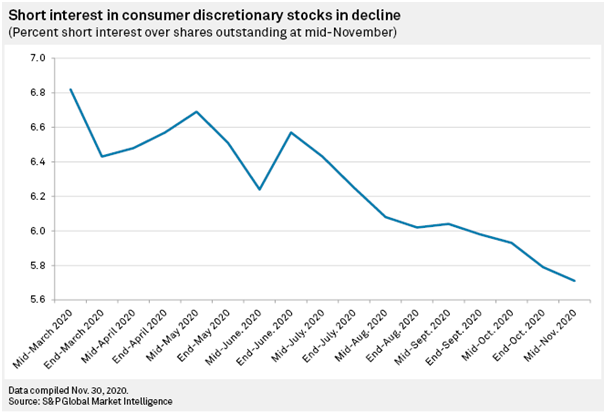Short-sellers have been driven out by an influx of covid vaccine-infused market optimism. Interest in selling short is so low that it might start to work!
Must know
- Short interest plummeted since peaking in March but has now reached levels typically associated with ‘short seller capitulation’
- REMINDER: Going short is taking a bearish bet against a market by selling a security without owning it.
- The aggregate actions of short-sellers offers an insight into the mood of the market overall.
- Like all sentiment indicators, aggregate short interest offers useful signals when it reaches extremes
- Tesla CEO Elon Musk famously vowed to burn shorts in his company’s stock and so far has been very successful in doing so.
- Consumer discretionary is the most-shorted sector
- TRADING: How to use short interest?
Definition
The NYSE Group Short Interest File is a semi-monthly file containing the reported uncovered short positions of securities listed on NYSE, NYSE Arca and NYSE American.
What is going short? To go short, an investor will usually borrow shares from their broker in order to sell those shares in the market and hope to pocket the difference if those same shares fall in value.
What’s happening?
Interest in shorting stocks is very low and that negatively correlates with record high stock markets. Of course, traders selling stocks short are going to feel burnt out when they face a series of losing trades because markets continue to rise and their short bets do not work out. The result of feeling burnt out like this is that they stop selling short.
Who cares what short sellers do?
Naturally as stock markets fall, traders think more about opportunities to go short the market, while as markets rise, selling short becomes less attractive.
The number of short sellers is always considerably lower than the number of ‘long-buyers’ but the number of short sellers today versus the number of short-sellers in previous periods offers a useful insight into the mood of the market. Naturally high numbers of short-sellers characterises a very bearish market where as low numbers of short-sellers characterises a very bullish market. It is this second environment that we find ourselves in.
Where are traders selling short?
Short-sellers tend to look for pockets of the market that are overvalued or overbought. That tends to mean short-sellers focus on some of the best performing areas of the market. This breakdown below from S&P shows the top three performing sectors are the three most shorted sectors.
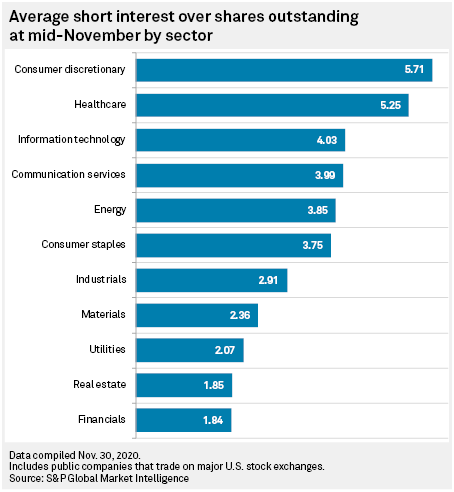
The problem arises when those best-performing areas continue to outperform. And that is what has happened to an extreme degree in 2020 and during the coronavirus pandemic. Technology stocks, which promise strong growth in a low growth environment, had already been top gainers since the 2008 financial crisis. This outperformance was exacerbated by the acceleration of the digital economy when the real world economy was locked down by governments in response to the pandemic.
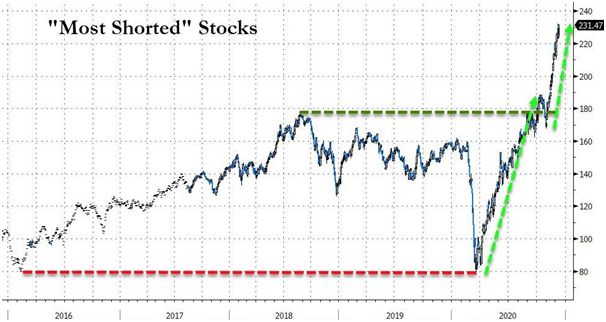
Tesla
Tesla has been one of the most-shorted stocks since its IPO and it typifies the pain been felt by short-sellers as the stocks as gained 100s of percent. Famed short-seller Jim Chanos has admitted to reducing his short position in Tesla. Chanos has no less conviction in his trade but has been squeezed by the skyrocketing share price.
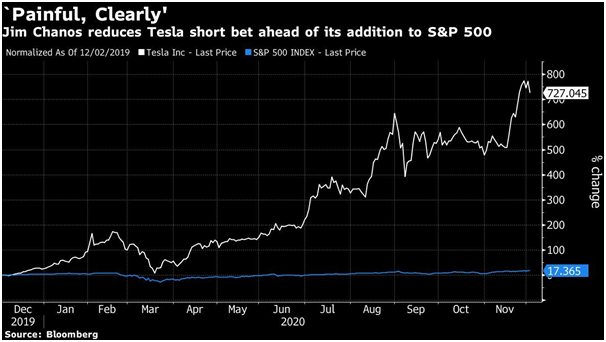
Interestingly, Michael Barry of the ‘Big Short’ move fame recently announced he had gone short in Tesla.
How to trade on short interest
The diagram below demonstrates a provable inverse relationship between low levels of short interest and stock market peaks.
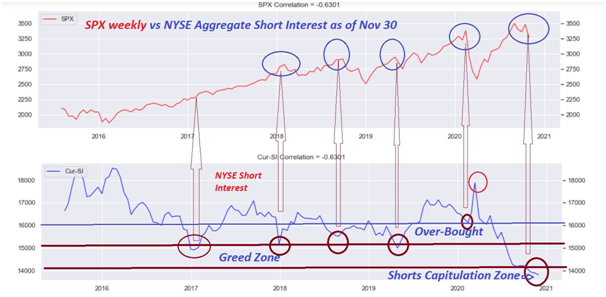
In the last five years, there have been a number of occasions in which the NYSE aggregated short interest falling to around 15,000 has proved to be a useful indication that the S&P 500 was about to form a peak.
It is worth noting that none of these readings of 15,000 caused an end to the multi-year bull market but were useful profit-taking moments within the bullish trend.
What we are currently seeing is not a reading of 15,000 but readings well below 14,000. The distinction is that the market is not just in a period of temporary excess ‘greed’ but in an extreme scenario in which short-sellers have completely ‘capitulated’ because of the painful and enduring rise in prices.
Conclusion
Sentiment readings like short-interest get to extreme levels during bull markets and can often hover there for extended periods of time but eventually they have to come off these extreme levels and that has pin-pointed the end of many bull markets.


